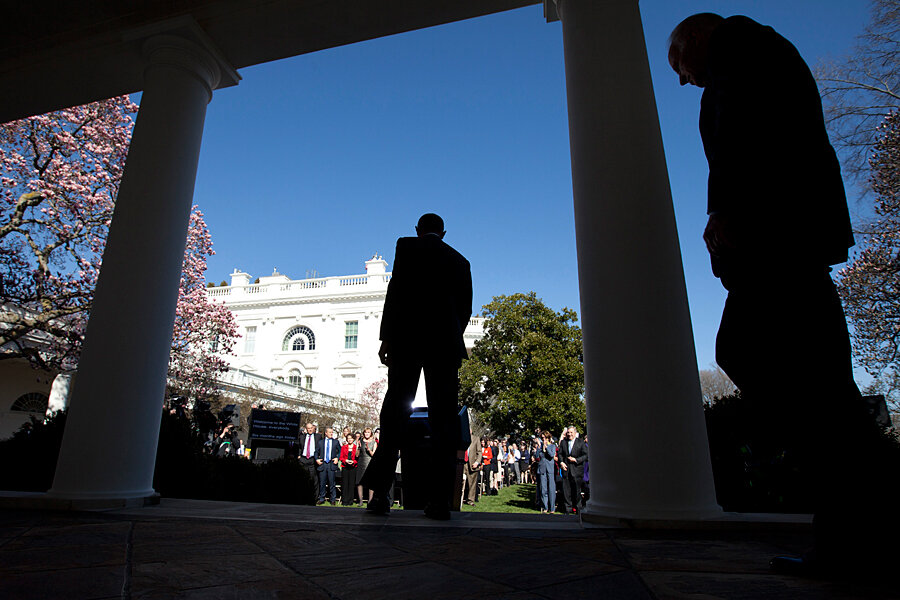House votes to amend Obamacare: how it would affect community colleges
Loading...
Taking aim at Obamacare, this time short of a full repeal, the Republican-led House passed the Save American Workers Act (H.R. 2575) Thursday by a vote of 248 to 179.
The bill seeks to preserve jobs by reducing employer obligations to provide health care for certain workers, but in so doing, say critics, would lead to more people without health care and a greater financial burden on the federal government.
The bill would change the definition of full-time employees under the Affordable Care Act, requiring medium and large employers (about 4 percent of all employers) to provide health insurance for those working more than 40 hours a week, up from 30 hours in the original law.
The full-time worker issue has raised questions about whether the ACA is harmful to the education sector – particularly community colleges, which rely heavily on part-time adjunct faculty and have especially lean budgets.
Supporters of the proposed change say part-time workers can’t afford to have their hours cut by employers trying to avoid the mandate, and about 2.6 million workers could be affected, they estimate. Opponents – and the Congressional Budget Office – say a 40-hour rule would significantly increase the federal deficit by reducing the portion of people covered by employers.
A companion bill has been introduced in the Senate. But President Obama has threatened a veto.
The employer mandate has been delayed until 2015 or later, depending on the employer’s size, but already a number of colleges have said that they are cutting the hours and course loads of many of their adjunct staff because they won’t be able to afford the insurance or the government fines for not covering those who work more than 30 hours.
To cover those affected by the 30-hour rule, it would cost an estimated $10 million annually for the Ivy Tech Community College system, which serves about 200,000 students in Indiana, President Thomas Snyder said at a hearing of the House Ways and Means Committee in late January. (The sponsor of H.R. 2575, Todd Young (R) of Indiana, is a member of Ways and Means.)
“The uncertainty of implementing the 30-hour rule has impacted colleges across the country, but none more dramatically than the community college system,” Mr. Snyder said. Because the colleges need to cut adjunct hours, they need to find more qualified people to teach or cut the number of classes offered. “The end result may be less student access,” he said.
Other examples of harm to the education sector from the ACA were cited this week by the House Committee on Education and the Workforce:
• The University of Akron in Ohio has cut the hours of more than 400 faculty who were working more than 29 hours a week.
• An employee of the Granite School District in Utah told KUTV news: “Now I have 29 hours that I’m capped out at, that I cannot go above and beyond.... I’m trying to stay off of Medicaid and food stamps, things like that, but this makes it utterly impossible.”
• The number of courses that adjunct professors at the Community College System of New Hampshire can teach will be limited – capping potential earnings at about $10,000 for some who use the jobs as their main source of income, the Concord Monitor reported.
Such examples only represent a small minority of community colleges, says David Baime, vice president for government relations and policy analysis for the American Association of Community Colleges in Washington.
The group hasn’t taken a stand on the Save American Workers Act, but was involved in discussions leading up to guidance issued recently by the Treasury Department. Colleges had been concerned that the law was vague about how to judge the hours of adjunct faculty, who often are hired and paid based on the number of courses they teach. The new guidance offers one way to make that calculation but leaves some flexibility.
With that guidance, the ACA “largely permits current practices concerning provision of health-care benefits in colleges to remain in place,” Mr. Baime says, so he’s not getting a lot of pressure from his members to support a change in the ACA.
The House bill would hurt more low-income workers than it helps, in education and other sectors, says Maria Maisto, president of the New Faculty Majority, a national nonprofit based in Akron, Ohio, that advocates for improving the working conditions of the 50 percent of university faculty who are part-time and another 25 percent who are not on the tenure track.
But Ms. Maisto welcomes the debate over the 30-hour cap because it is forcing scrutiny of what she says is a longstanding trend – universities not paying adjunct faculty commensurate with the level of work they do, much of which occurs outside the classroom.
The Congressional Budget Office estimated that H.R. 2575 would reduce the number of people receiving employee-based coverage by 1 million between 2015 and 2024, increase the number of uninsured by up to 500,000, and increase the number of people getting insurance from other sources (some of it government subsidized) by 500,000 to 1 million. As a result, it would increase the deficit by $73.7 billion over that same time period.








